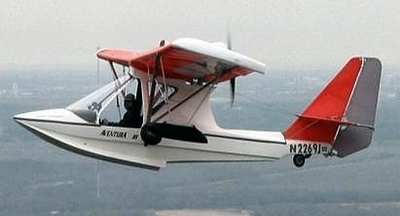Pilot Was Practicing Water Landings On Flooded Fields In AL
The NTSB has released a preliminary report in an accident involving an Aventura II amphibious homebuilt airlane which went down in a field where it had been practicing water landings. The field had previously been flooded with enough water for the plane to land, but on the day of the accident, a friend attempted to wave off the airplane, as the water was too shallow. The aborted landing attempt resulted in the accident. Both occupants of the plane were fatally injured.

NTSB Identification: ERA12FA194
14 CFR Part 91: General Aviation
Accident occurred Sunday, February 26, 2012 in Laceys Spring, AL
Aircraft: STROUT FRANK AVENTURA II, registration: N1193S
Injuries: 2 Fatal.
This is preliminary information, subject to change, and may contain errors. Any errors in this report will be corrected when the final report has been completed.
On February 26, 2012, about 1330 central standard time, a experimental amateur-built Aventura II (similar aircraft pictured below), N1193S, was substantially damaged when it impacted terrain and was subsequently consumed by a postimpact fire near Lacey's Spring, Alabama. The certificated private pilot and the passenger were fatally injured. Visual meteorological conditions prevailed, and no flight plan was filed for the flight. The local personal flight, which originated from a nearby private airstrip about 1328, was operated under the provisions of Title 14 Code of Federal Regulations Part 91.
According to a friend of the pilot, who also witnessed the accident, the pilot had purchased the airplane about 2 months prior to the accident, and since that time had completed about 10 total flights in the airplane. Several days before the accident, the friend and the pilot flew the airplane from the pilot's private airstrip to a flooded farm field located about 1-mile northeast, so that the pilot could practice landing the amphibious airplane on water. During that flight, the friend reported that the airplane performed normally.

On the day of the accident flight, the pilot again intended to fly to the flooded farm field to practice water landings. The friend thought that the water level in the field might have receded since their last flight, as he believed that the field was being drained, so he drove out to the field to assess the situation. Upon reaching the flood gate, the friend noted that the water level was too low to attempt a landing, and as the accident airplane approached him head on, he "waived-off" the pilot. The airplane then passed over his left shoulder at an altitude about 100 feet above the ground. Moments later the airplane impacted the ground about 100 feet behind and to the right of him and immediately caught fire. The friend then ran toward the airplane in an attempt to extract the occupants, but when the whole airframe ballistic recovery parachute rocket ignited, he had to vacate the area of the wreckage. The fire then worsened and the entire airframe was consumed in about 10 minutes.
Two other witnesses reported observing the airplane during the final moments of the flight. In separate statements they each described observing the airplane flying low, in a steep left bank, and in a nose down attitude before each lost sight of it behind obstructions.
 NTSB Final Report: Cessna 177B
NTSB Final Report: Cessna 177B ANN's Daily Aero-Term (05.08.25): Final Approach Fix
ANN's Daily Aero-Term (05.08.25): Final Approach Fix Aero-News: Quote of the Day (05.08.25)
Aero-News: Quote of the Day (05.08.25) ANN's Daily Aero-Term (05.09.25): Estimated (EST)
ANN's Daily Aero-Term (05.09.25): Estimated (EST) ANN's Daily Aero-Linx (05.09.25)
ANN's Daily Aero-Linx (05.09.25)




